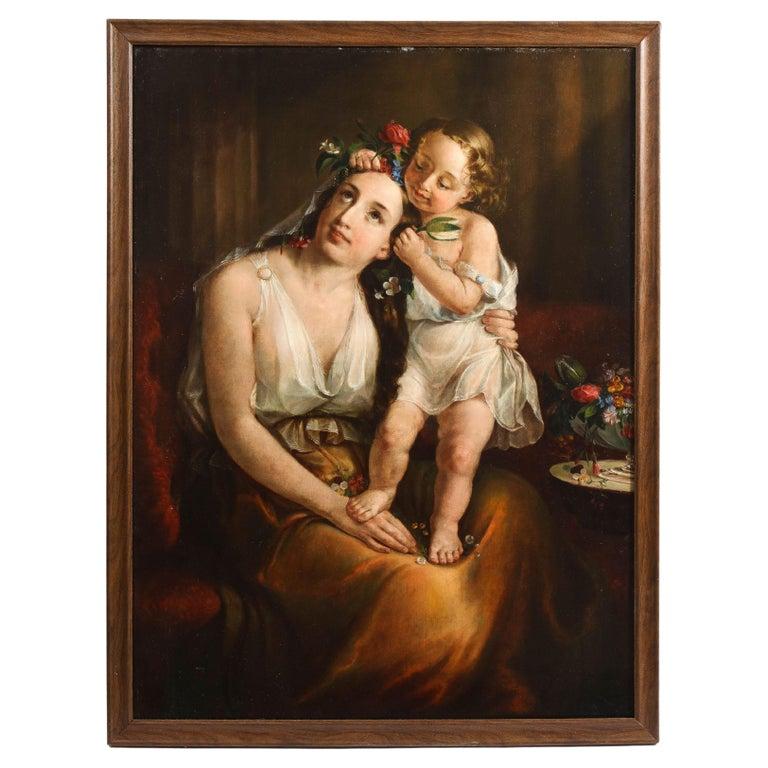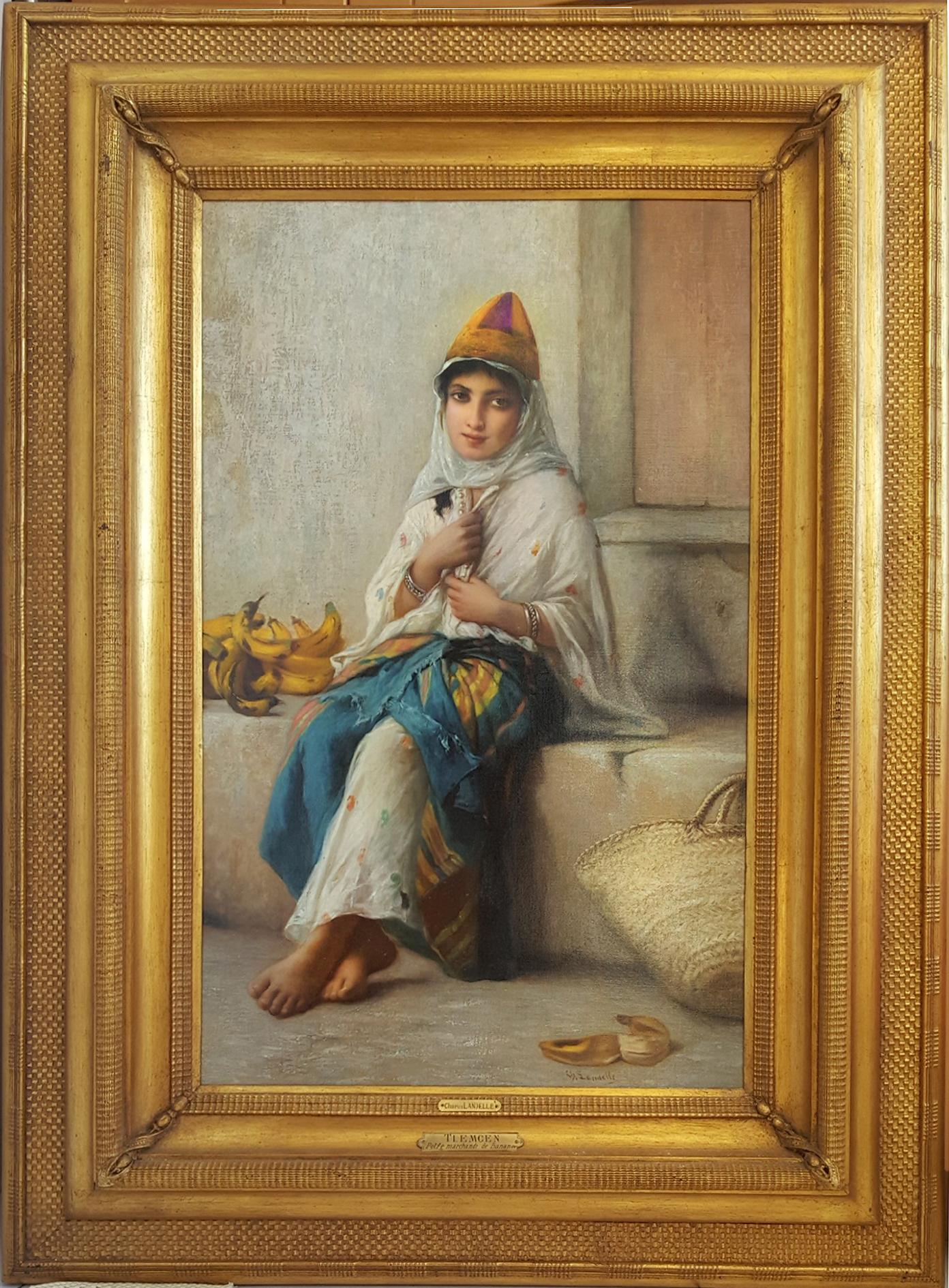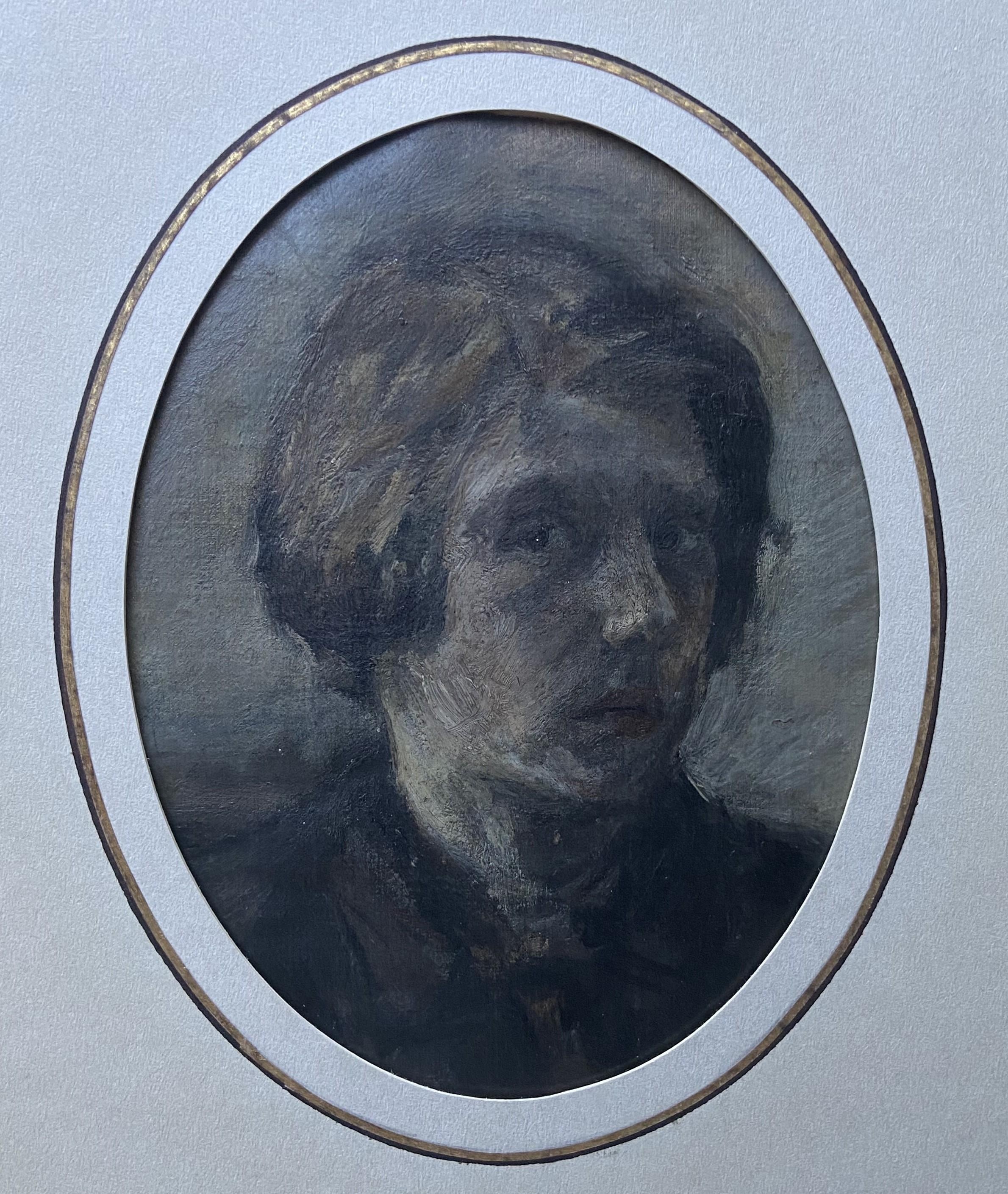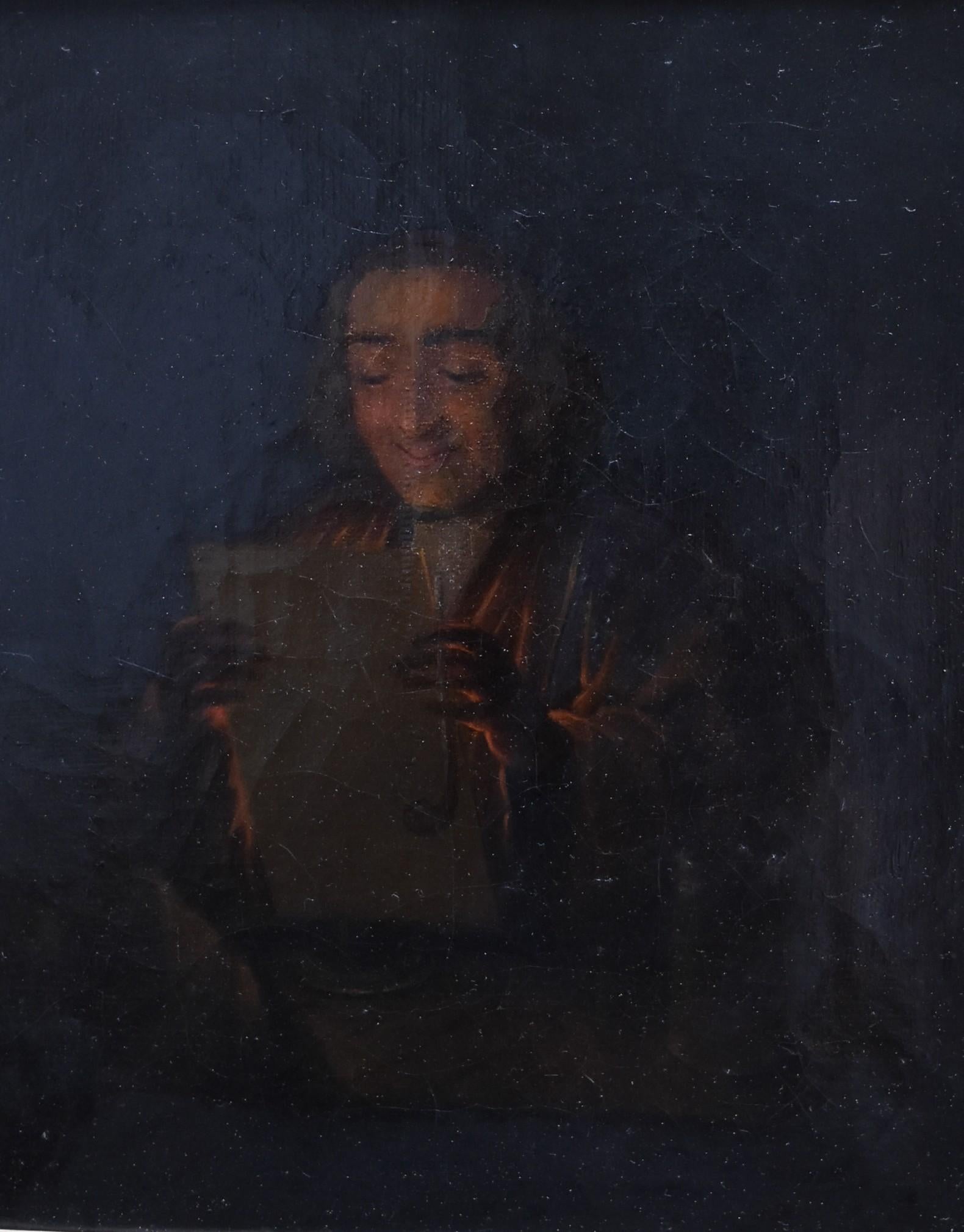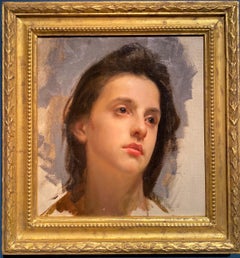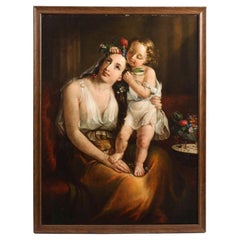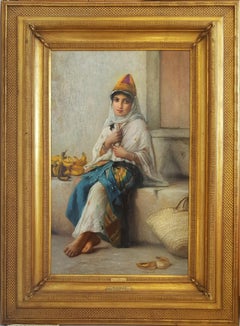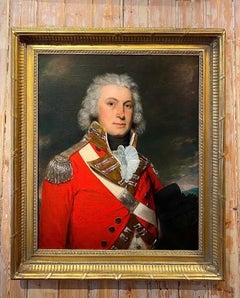
Portrait of an officer of the 67th Foot (South Hampshire) Regiment
Want more images or videos?
Request additional images or videos from the seller
1 of 8
Sir William BeecheyPortrait of an officer of the 67th Foot (South Hampshire) Regimentcirca 1790
circa 1790
About the Item
- Creator:Sir William Beechey (1753 - 1839, British)
- Creation Year:circa 1790
- Dimensions:Height: 30 in (76.2 cm)Width: 25 in (63.5 cm)
- More Editions & Sizes:onePrice: $1
- Medium:
- Movement & Style:
- Period:1790-1799
- Condition:
- Gallery Location:London, GB
- Reference Number:1stDibs: LU5246078622
About the Seller
5.0
Vetted Seller
These experienced sellers undergo a comprehensive evaluation by our team of in-house experts.
Established in 2007
1stDibs seller since 2014
64 sales on 1stDibs
Typical response time: 2 hours
More From This SellerView All
- Head StudyLocated in London, GBJoseph-Auguste Rousselin French 1841 - 1916 Head Study Oil on board, signed with initials and signed verso Image size: 12 x 11 inches This head study provides an unbelievably moving portrait of an androgynous sitter. Employing incredible technique, the artist has achieved the highly finished porcelain skin, thoughtful eyes and pink lips of the sitter with incredible softness. The unfinished quality of the background make the composition of the work particularly satisfying to the modern eye. Loosely sketched dashes and brushy swoops outline the model's head. The mix of finished and more expressive elements reveals the artist's brilliant eye, technique and personality. Artistically, Rousselin does not seem to be influenced by the friendships that he forged with the Impressionists but rather he has remained rather faithful to the academic technique of William Bouguereau, whose studio he also used to frequent. This study is certainly comparable to the work by Bouguereau, specifically his graceful portraits of women. Bouguereau championed the traditional academic style and his methods were taught to him by a pupil of Ingres. Similar academic inspiration is apparent in this work, from the conscious posing of the subject to the evenly laid colours. Indeed, alike the work of Bouguereau this follows the same classical approach to composition, form and subject matter. The Artist Born in Paris in 1841, Rousselin grew up to be a French painter and art collector. From a young age he studied in the workshops of Charles Gleyre and Thomas Couture, here he met the young impressionist generation. His studio peers included Auguste Renoir, Alfred Sisley and Édouard Manet, with whom he forged strong bonds of friendship. It was at his invitation that his two friends Renoir and Sisley exhibited at the Salon of the Society of Friends of the Arts in Pau, a region where Rousselin had family ties. Manet invited him to his family home in Boulogne-sur-Mer where he had him pose in the summer of 1868 for 'Le Déjeuner dans l'Atelie'. Rousselin can be seen in the background of the painting as the man with the cigar, wearing a grey hat...Category
Mid-19th Century Romantic Portrait Paintings
MaterialsOil
- The Distraction, Late 19th Century Oil Painting, OrientalistLocated in London, GBWalter Charles Horsley 1855 – 1921 The Distraction Oil on canvas, signed lower left Image size: 25 x 20 1/2 inches (63.5 x 52 cm) Orientalist ha...Category
Late 19th Century Portrait Paintings
MaterialsOil, Canvas
- Portrait of a Trepanning Surgeon, Early 17th Century Oil PaintingLocated in London, GBOil on oak panel, inscribed top left ‘AETATIS SUAE 32’ Image size: 27 x 35 inches (68.5 x 89 cm) Contemporary style handmade frame This is a portrait of a medical figure from the ea...Category
Early 17th Century Portrait Paintings
MaterialsOak, Oil
- Portrait of a Girl, 17th Century English School Old Masters OilBy Gilbert JacksonLocated in London, GBGilbert Jackson English Active: 1620 - 1650 Portrait of a Girl Oil on panel, signed upper left and Inscribed upper right Image size: 24 ½ x 20 inches Contemporary style hand made...Category
17th Century Old Masters Portrait Paintings
MaterialsOil
- Portrait of William Herbert, 3rd Earl of Pembroke, Early 17th Century PortraitLocated in London, GBEnglish School, (circa 1600) Portrait of William Herbert, 3rd Earl of Pembroke Oil on panel, oval Image size: 29¼ x 23⅞ inches Painted wooden frame Provenance: 176, Collection of Francis Greville, 1st Earl of Warwick. The Trustees of the Lord Brooks’ Settlement, (removed from Warwick Castle). Sotheby’s, London, 22nd March 1968, lot 81. Painted onto wooden panel, this portrait shows a dark haired gentleman in profile sporting an open white shirt. On top of this garments is a richly detailed black cloak, decorated with gold thread and lined with a sumptuous crimson lining. With the red silk inside it’s all very expensive and would fall under sumptuary laws – so this is a nobleman of high degree. It’s melancholic air conforms to the contemporary popularity of this very human condition, evident in fashionable poetry and music of the period. In comparison to our own modern prejudices, melancholy was associated with creativity in this period. This portrait appeared in the earliest described list of pictures of Warwick castle dating to 1762. Compiled by collector and antiquary Sir William Musgrave ‘taken from the information of Lord & Lady Warwick’ (Add. MSS, 5726 fol. 3) is described; ‘8. Earl of Essex – an original by Zuccharo – seen in profile with black hair. Holding a black robe across his breast with his right hand.’ As tempting as it is to imagine that this is a portrait of Robert Devereux, the 2nd Earl Essex, we might take this with a pinch of salt. Its identification with this romantic and fatal Elizabethan might well have been an attempt to add romance to Warwick Castle’s walls. It doesn’t correspond all that well with Essex’s portraits around 1600 after his return from Cadiz. Notably, this picture was presumably hung not too far away from the castle’s two portraits of Queen Elizabeth I. The first, and undoubtedly the best, being the exquisite coronation portrait that was sold by Lord Brooke in the late 1970s and now hangs in the National Portrait Gallery. The second, described as being ‘a copy from the original at Ld Hydes’, has yet to resurface. The portrait eventually ended up being hung in the State Bedroom of Warwick Castle. Archival documents present one other interesting candidate. The Greville family’s earliest inventory of paintings, made in 1630 at their home Brooke House in Holborn, London, describes five portraits of identified figures. All five belonged to the courtier, politician and poet Sir Fulke Greville (1554-1628), 1st Baron Brooke, and were hung in the ‘Gallerie’ of Brooke House behind yellow curtains. One of them was described as being of ‘Lord of Pembrooke’, which is likely to have been William Herbert (1580-1630), 3rd Earl of Pembroke. William was the eldest son of Greville’s best friend’s sister Mary Sidney, and was brought up in the particularly literary and poetically orientated household which his mother had supported. Notably, the 3rd Earl was one of the figures that Shakespeare’s first folio was dedicated to in 1623. The melancholic air to the portrait corresponds to William’s own pretensions as a learned and poetic figure. The richness of the robe in the painting, sporting golden thread and a spotted black fabric, is indicative of wealth beyond that of a simple poet or actor. The portrait’s dating to around the year 1600 might have coincided with William’s father death and his own rise to the Pembroke Earldom. This period of his life too was imbued with personal sadness, as an illicit affair with a Mary Fitton had resulted in a pregnancy and eventual banishment by Elizabeth I to Wilton after a short spell in Fleet Prison. His illegitimate son died shortly after being born. Despite being a close follower of the Earl of Essex, William had side-stepped supporting Devereux in the fatal uprising against the Queen and eventually regained favour at the court of the next monarch James I. His linen shirt is edged with a delicate border of lace and his black cloak is lined on the inside with sumptuous scarlet and richly decorated on the outside with gold braid and a pattern of embroidered black spots. Despite the richness of his clothes, William Herbert has been presented in a dishevelled state of semi-undress, his shirt unlaced far down his chest with the ties lying limply over his hand, indicating that he is in a state of distracted detachment. It has been suggested that the fashion for melancholy was rooted in an increase in self-consciousness and introspective reflection during the late 16th and early 17th centuries. In contemporary literature melancholy was said to be caused by a plenitude of the melancholy humor, one of the four vital humors, which were thought to regulate the functions of the body. An abundance of the melancholia humor was associated with a heightened creativity and intellectual ability and hence melancholy was linked to the notion of genius, as reflected in the work of the Oxford scholar Robert Burton, who in his work ‘The Anatomy of Melancholy’, described the Malcontent as ‘of all others [the]… most witty, [who] causeth many times divine ravishment, and a kind of enthusiamus… which stirreth them up to be excellent Philosophers, Poets and Prophets.’ (R. Burton, The Anatomy of Melancholy, London, 1621 in R. Strong, ‘Elizabethan Malady: Melancholy in Elizabethan and Jacobean Portraits’, Apollo, LXXIX, 1964). Melancholy was viewed as a highly fashionable affliction under Elizabeth I, and her successor James I, and a dejected demeanour was adopted by wealthy young men, often presenting themselves as scholars or despondent lovers, as reflected in the portraiture and literature from this period. Although the sitter in this portrait is, as yet, unidentified, it seems probable that he was a nobleman with literary or artistic ambitions, following in the same vain as such famous figures as the aristocratic poet and dramatist, Edward de Vere...Category
Early 17th Century Old Masters Portrait Paintings
MaterialsWood Panel, Oil
- Portrait of a King's MessengerBy Charles PhilipsLocated in London, GBCharles Philips 1703 - 1747 Portrait of a King's Messenger Oil on canvas Image size: 35 ¾ x 28 inches Original gilt frame King's Messenger The job of a King's Messenger was that of a diplomatic courier, hand-carrying important and secret documents around the world. Some say that the history of the sovereigns' messengers goes back to 1199, but the first known messenger was John Norman, who in 1485 earned 4d (1½ pence) per day for carrying the state papers of Richard III. The silver greyhound on the messenger's badge dates back to Charles II. In 1660, during his exile at Breda, Netherlands, Charles II issued a declaration of amnesty to all those who had opposed him and his father. He used messengers to make his intentions known. In answer to the messenger's question "How will they know me?", Charles reached forward to a silver bowl on the table in front of him. This bowl, with four decorative greyhounds standing proud above the rim, was well known to all courtiers. Charles broke off a greyhound and gave it to the messenger as a guarantee that the message came from him. From that date, the King's Messenger always wore a silver greyhound around his neck. Later, dating from George II or III, a badge with the Royal Arms in enamel, with the greyhound suspended beneath, was worn. A George III example of the King's Messenger Badge, pre 1800, sold for over £30,000 pounds some years ago. The silver greyhounds were minted for each new reign, except the brief one of King Edward VIII. The sovereign's messengers were originally controlled by the Lord Chamberlain, being Messengers of the Great Chamber. When the Foreign Office was created in 1782, the messengers remained common to the three Secretaries of State. Charles Philips was an English artist known for painting a number of portraits and conversation pieces for noble and Royal patrons in the mid-eighteenth century. Philips was baptised in the combined parish of St Mildred, Poultry with St Mary...Category
18th Century Portrait Paintings
MaterialsOil, Canvas
You May Also Like
- Lilly Martin Spencer (American, 1822-1902) A Portrait of a Mother and ChildBy Lilly Martin SpencerLocated in New York, NYLilly Martin Spencer (American, 1822-1902) A Portrait of a Mother and Child 19th Century. Oil on canvas, signed Lilly Martin Spencer was one of the most popular and American female genre painters in the mid-nineteenth century. She primarily painted domestic scenes, paintings of women and children...Category
19th Century Romantic Portrait Paintings
MaterialsOil
- Petite Marchande de Banane - Orientalist, North African Girl Selling BananasBy Charles Zacharie LandelleLocated in Miami, FLBeautiful Orientalist painting - The Framed size: 47 inches x 34.5 inches. Magnificent ornate Frame The paint surface looks like the style of William-Adolphe Bouguereau Signed lower right. Provenance: Gallery Label with inventory number: Size on label is in centimeters, which indicates the painting came from a United Kingdom art gallery. Subsequently, Robert Funk Fine Art...Category
1880s Romantic Figurative Paintings
MaterialsOil
- French Romantic School, 19th Century, Manly head of bearded man, oil on canvasLocated in Paris, FRFrench Romantic School 19th Century Manly head of bearded man oil on canvas 46 x 37.8 cm In fairly good condition, some inpaintings visible under UV light, mainly in the backgrounds ...Category
1850s Romantic Portrait Paintings
MaterialsCanvas, Oil
- Portrait of a young Girl with a Doll, Basile de Loose, Belgium, 19th, RomanticBy Basile de LooseLocated in Greven, DEBasile de Loose Portrait of a Child signed and dated „1861“ Basile De Loose (17 December 1809 – 24 October 1885) was a Belgian painter. He was born in Zele, East Flanders, United K...Category
19th Century Romantic Figurative Paintings
MaterialsCanvas, Oil
- Antique portrait of a woman, French romantic oil painting, female portraitLocated in AIGNAN, FRAntique portrait of a young woman. Romantic 1800's oil painting on canvas board. This is an attractive, traditional 19th Century French oil painting in its original frame. MORE ABO...Category
1840s Romantic Portrait Paintings
MaterialsOil
- The triumph of the goldsmith Claude Ballin (1615-1678), allegorical compositionLocated in PARIS, FREdmond PETITEAU 19th century, French The triumph of the goldsmith Claude Ballin (1615-1678), allegorical composition Painting, oil on fine canvas glued to a wooden panel (mahogany), gold background Signed Painting: 51 x 81 cm Beautiful original oak frame: 69 x 99 cm (be careful, large size) Very good condition Circa 1840-50 Edmond Petiteau is an orientalist painter...Category
19th Century Romantic Portrait Paintings
MaterialsOil
